This article was published in Scientific American’s former blog network and reflects the views of the author, not necessarily those of Scientific American
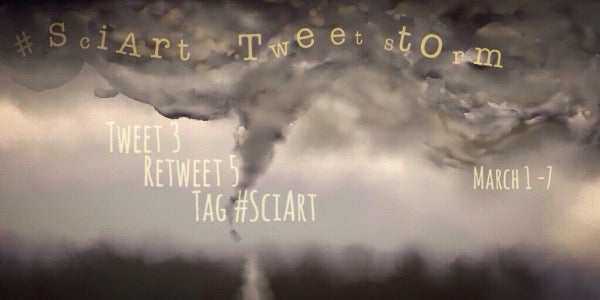
Was it really a month ago? The 2nd annual SciArt Tweet Storm swept over Twitter like a tsunami of science cartoons, paintings, textiles, sculptures, photos, animations and kick ass illustrations.
The idea is simple: connect artists who are inspired by science with researchers, librarians, authors, bloggers, editors, art directors and science communicators. The method? 1) Ask hundreds of artists to tweet 3 pieces of their own work, 2) retweet 5 from other people, and 3) use the #sciart hashtag, every day from March 1st to 7th.
On supporting science journalism
If you're enjoying this article, consider supporting our award-winning journalism by subscribing. By purchasing a subscription you are helping to ensure the future of impactful stories about the discoveries and ideas shaping our world today.
When we proposed this idea to the community last year, we really didn't know what to expect.
This year, I was on the edge of my seat again when the Tweet Storm launched at 7am EST, March 1st, but by the time I got to work, 500 tweets and retweets had started to blow through Twitter.
* * * *
Caveats
Last year, a lot of our stats came from Topsy, which is a defunct service now. (I cried real tears.) This year, I'm sharing numbers from a 30-day trial from Hashtracking. So there may be some discrepancies in how Topsy and Hashtracking measure.
Hashtracking allows you to embed their graphs, but for posterity, I have screencapped them instead.
Note: Using another service I will not name, I saw there were about 500 #sciart tweets + retweets by 1pm on March 1st, so add that number to these totals. I skipped using that 2nd service after we surpassed the free trial number of tweets it could follow (5,000) before the end of the first day.
For comparison, you can find the numbers for last year, here:
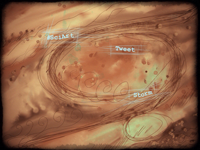
Enough chatter. Let's look at the numbers.
* * * *
Totals
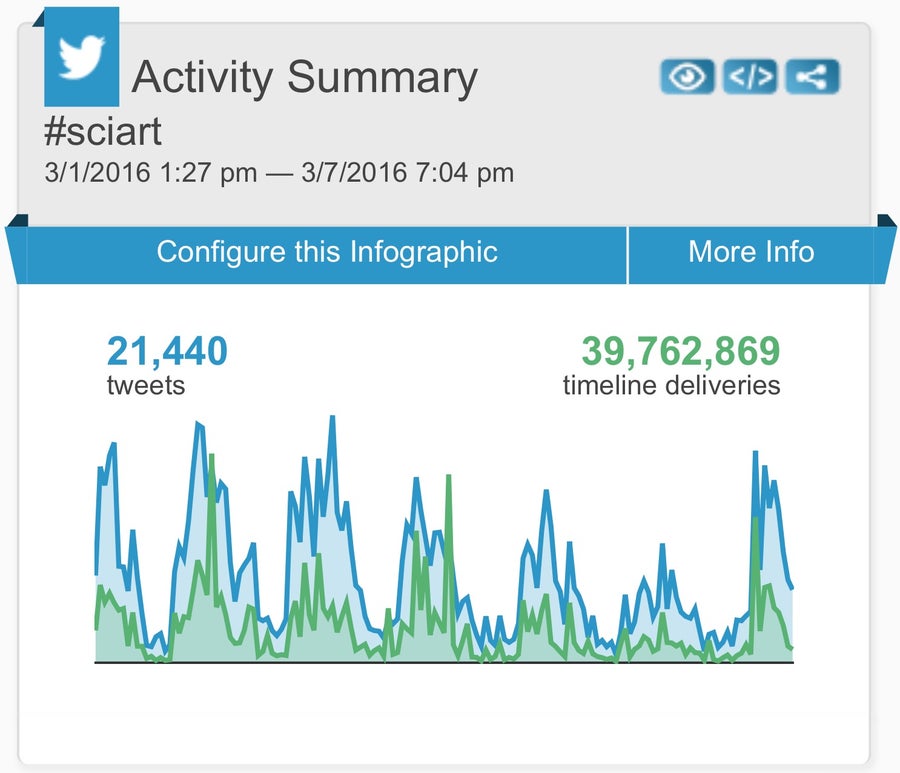
All graphs from Hashtracking. Here you can see the total number of tweets (add about 500 to this total that weren't captured at the beginning), and the total number of timeline deliveries.
The total number of tweets + retweets this year was about 22,000: in 2015, it was 29,000.
I worried a lot about the dip, and why it might be so. Last year, in advance of the event, I emailed about 100 artists. This year I let a few tweets and a blog post hinting at the event let everyone know. Perhaps I need to email people again?
In 2015, the SciArt Tweet Storm also fell perfectly from a Sunday to Saturday, March 1st to 7th. This year was a Tuesday to a Monday.
The news cycle on Twitter also plays a part I'm sure. Last year was relatively quiet, and this year people are talking about the US primaries.
In addition, last year I put up a couple of posts on Symbiartic to let people know how it was going. I did that this year only on Twitter. We also received some press from Gizmodo and Nature last year, since it was a novelty. Maybe the reinforcement helps.
But hey, over 21,000 sciart tweets is fantastic by any measure.

Above, you can see that 6,702 people tweeted or retweeted the #sciart hashtag during the event, and combined those people have a reach of over 13 million readers.
SciArt tweets were delivered into people's timelines almost 40 million times.
Time of Day
Generally, speaking, in my capacity as social media manager at INVIVO and as a freelance artist-blogger, I don't worry about ideal times of day to tweet images and art. Audiences are vast, and the right person seeing something at the right time relies on too many unknowns. But just in case you're wondering how to optimize your tweets for the next event, here is some info on time of day. Times are Eastern Standard Time (EST).
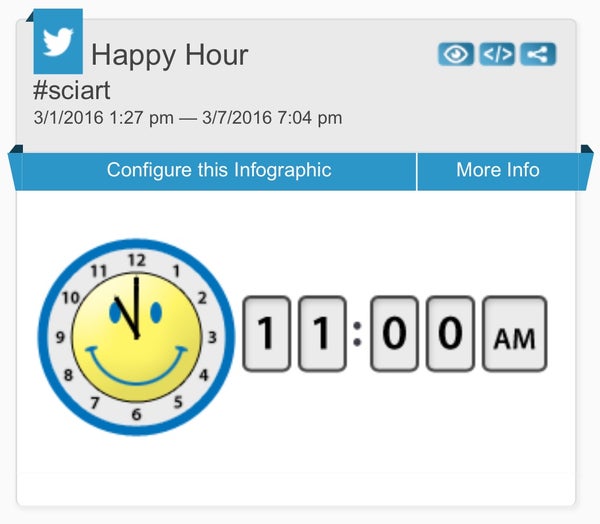
If 11 am is the most popular time, does that mean you'll be lost in the crowd, or get the most eyeballs on it? Probably worth tweeting in the optimal time as well as in off-hours, in my opinion.
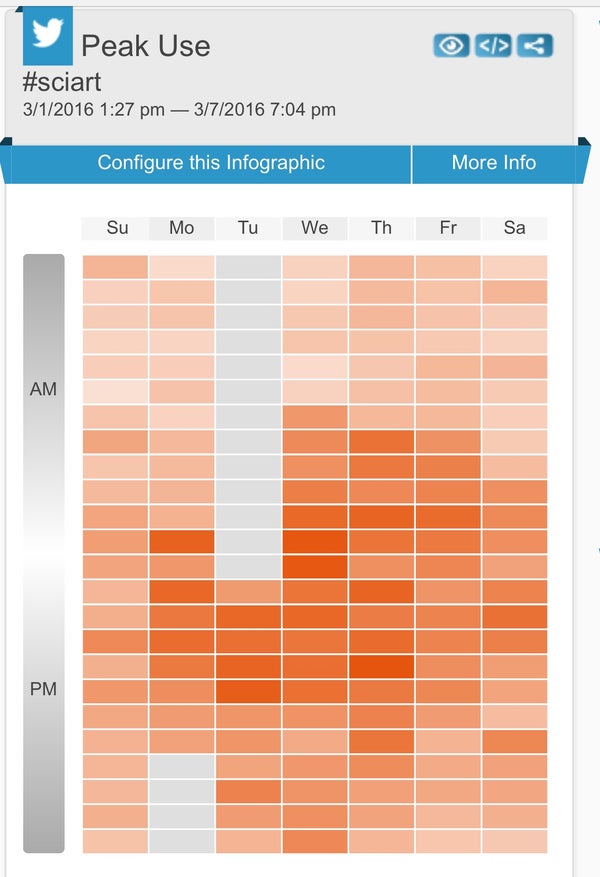
Heatmap of #sciart tweet traffic.
Looks like some data is missing in the visualization above, from Tuesday to Wednesday (I'm pretty sure we didn't all collectively halt for 12 hours) but even so, an interesting look at when the majority of people were engaging with the artwork.
Techniques
Sometimes I feel like there's not quite enough self-promotion going on during the SciArt Tweet Storm. not every tweet needs to be an ad, but nothing wrong with including a link to your online shop alongside your informative science describing your art. A tall order in 140 characters maybe.
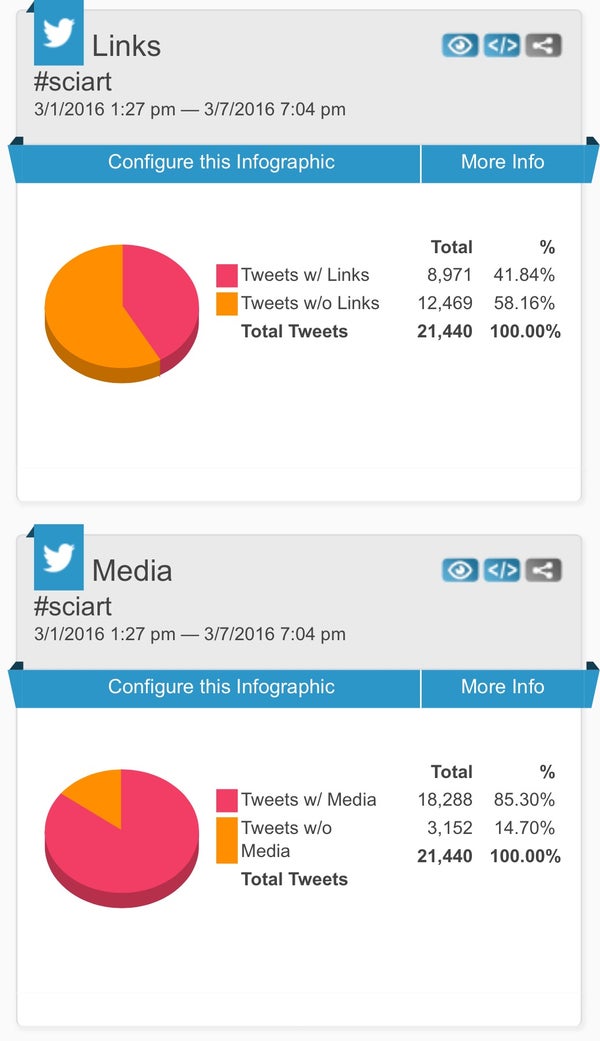
Above: tweets with links, and tweets with media. Almost every tweet had images or video, but less than half included a link.
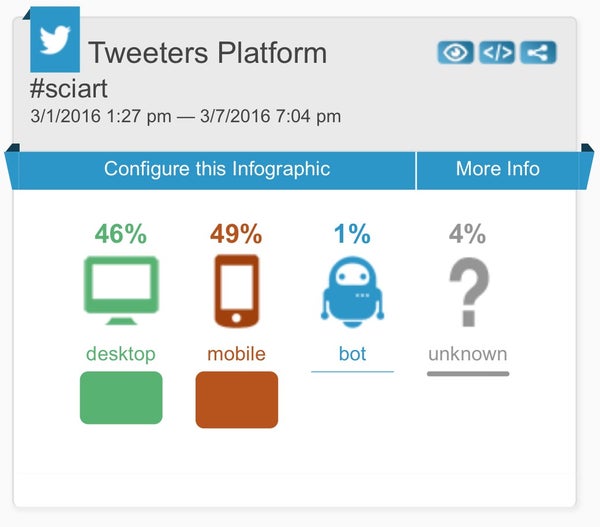
The majority of people participating were using mobile, but close to a 50/50 split. I'll share an interesting story about the bot influence in days to come.
Were people excited?
We know there were a lot of tweets, but were people engaging with them? Engagement on Twitter includes, retweeting, liking, replying, opening to full size, and clicking on links.
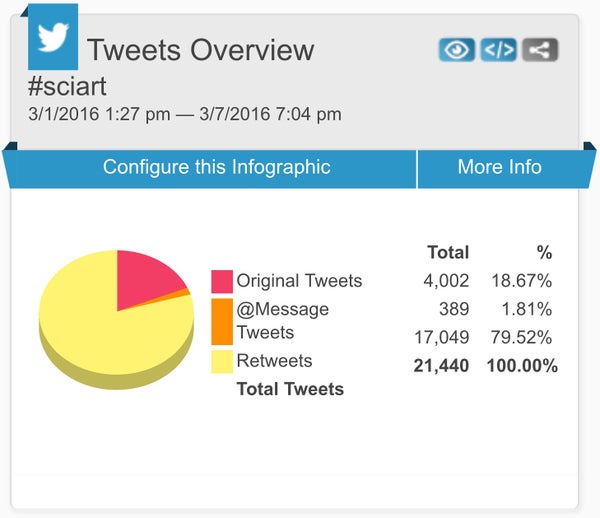
It certainly shows a lot of people were retweeting the sciart they encountered, though only a small amount of replies resulted. How can we artists prompt conversations by sharing our work on Twitter?

The top 20 most popular tweets prompted 22% of interactions.
Popular tweets and tweeps
Here's a look at some of the most popular tweets and accounts that participated.
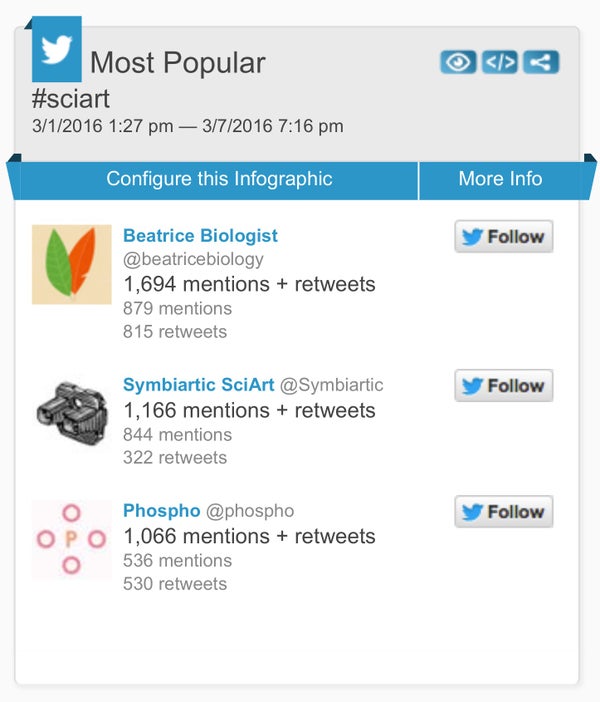
Follow these accounts on Twitter @BeatriceBiology, @Symbiartic and @Phospho.
Symbiartic's own cartoonist Katie McKissick, aka Beatrice the Biologist was the most popularly mentioned and retweeted artist during the Tweet Storm. The Symbiartic account made the top 3, unsurprisingly since we are shepharding and cheerleading the event. And medical animation studio Phospho did a fantastic job sharing short informative animation clips throughout the week.
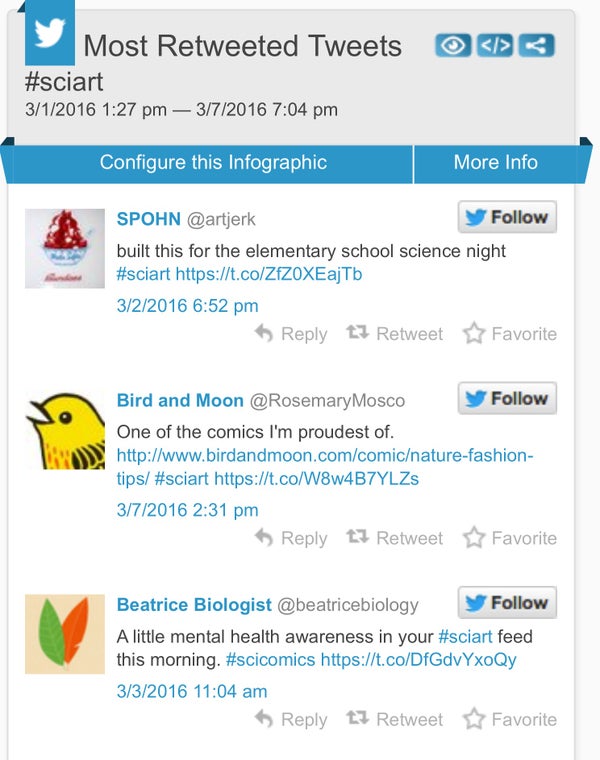
Follow these accounts at @artjerk, @RosemaryMosco, and again, @BeatriceBiology.
For pure retweetability, you can't beat the contribution science cartoons and comics make to science communication. Bird and Moon and Beatrice Biologist showed that accessible science is smart. And Artjerk shared an incredible Dunkleosteus articulate jaw sculpture in a short video clip.
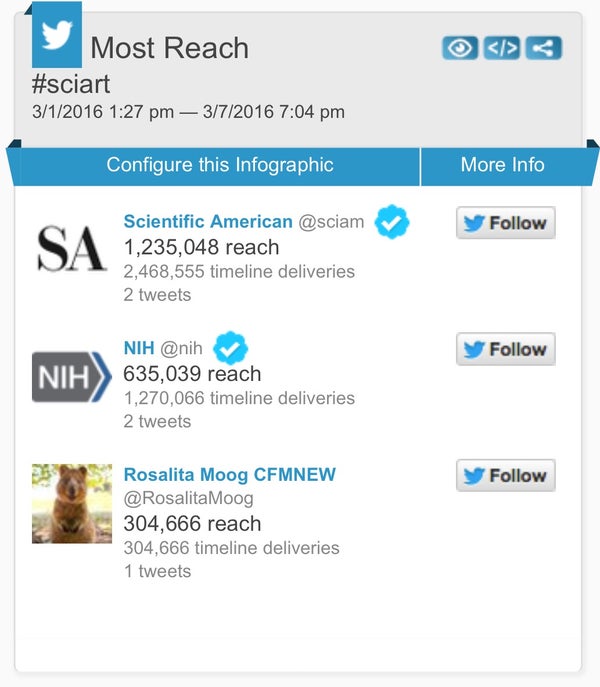
Above, the accounts with the most reach. I was somewhat dismayed we didn't get more than 2 tweets from the official Scientific American account, and that more large science news outlets let the event pass by. How did we fall below the radar this year? Last year it was brand new and a surprise, yet we had coverage from Gizmodo and Nature, as well as many independent bloggers - do we need an advance press release for the next event?
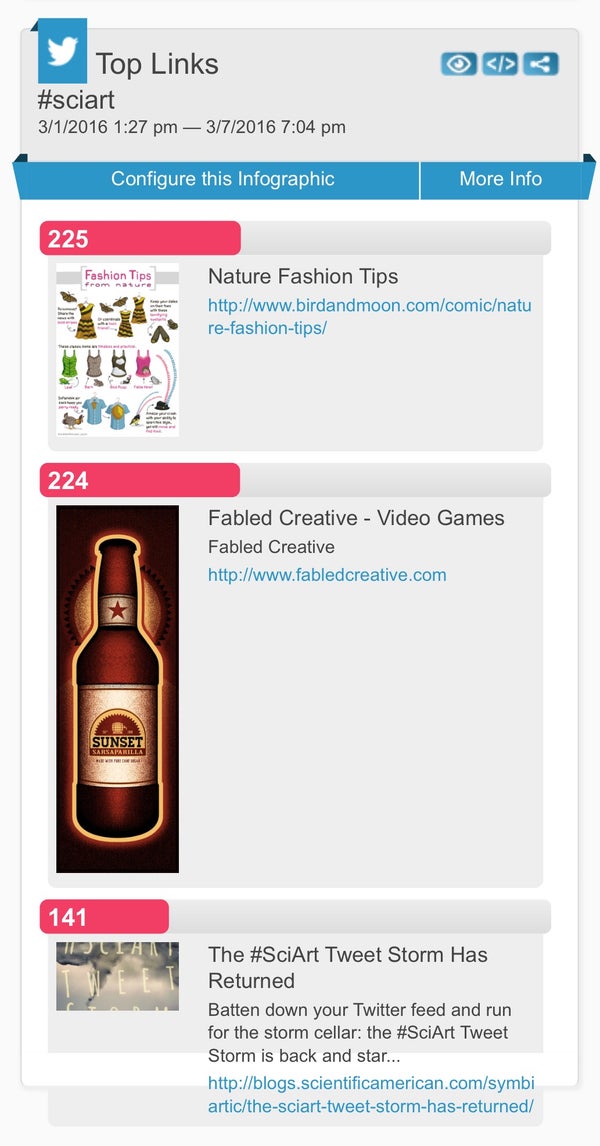
Follow these accounts at @RosemaryMosco, @FabledCreative and of course, @Symbiartic.
Above, the most popular links. Interestingly, Bird and Moon's link is to a specific cartoon, and the Fabled Creative Team's is to their whole portfolio. No one right way to share a link from this sample size!
* * * *
Polls
After the event, we ran a few polls from the @Symbiartic account to learn what we could from the community. Keep in mind that only a fraction of participants responded, but I assume most are likely to be people enthusiastic enough about the SciArt Tweet Storm that they are interested in participating again.
#SciArt Tweet Storm
Are you...
— Symbiartic SciArt (@Symbiartic) March 7, 2016
#SciArt Tweet Storm
Did you join in last year and this year?
— Symbiartic SciArt (@Symbiartic) March 7, 2016
#SciArt Tweet Storm
The Tweet Storm has been once a year. What do you prefer?
— Symbiartic SciArt (@Symbiartic) March 7, 2016
#SciArt Tweet Storm
Would you take part in a SciArt Tweet Storm on Instagram?
— Symbiartic SciArt (@Symbiartic) March 7, 2016
Would you like to see Instagram/Twitter #SciArt Tweet Storms
— Symbiartic SciArt (@Symbiartic) March 7, 2016
Where did you 1st hear about the #SciArt Tweet Storm?
— Symbiartic SciArt (@Symbiartic) March 7, 2016
Are you interested in an in-person, N Amer. #SciArt conference?
(Sign up here for news: https://t.co/JDkSlSGcst)
— Symbiartic SciArt (@Symbiartic) March 7, 2016
The best thing about the #SciArt Tweet Storm is...
— Symbiartic SciArt (@Symbiartic) March 7, 2016
Follow @Symbiartic @beatricebiology @eyeforscience @FlyingTrilobite
for #SciArt news and artwork!
— Symbiartic SciArt (@Symbiartic) March 7, 2016
* * * *
I'm less encouraged about an Instagram version of the SciArt Tweet Storm than I was a month ago: with the introduction of algorithms to peoples' timelines, what will that do to the impact it can have? And while there are re-sharing apps for Instagram, it's not easy. Should the Symbiartic crew create an Instagram account and use that to re-share all the work with the #sciart hashtag during an Instagram version of the event? Let us know what you think!
This ends the stats post! What insights do you find valuable? Let us know in the comments or on Twitter. And thanks again so much to everyone who participated or found someone new and fascinating to follow during the tweet storm.
Science communication needs science artists - and we're ready to work with you.
Tomorrow, we'll share a fascinating lesson we learned during the SciArt Tweet Storm about bots and Twitter.